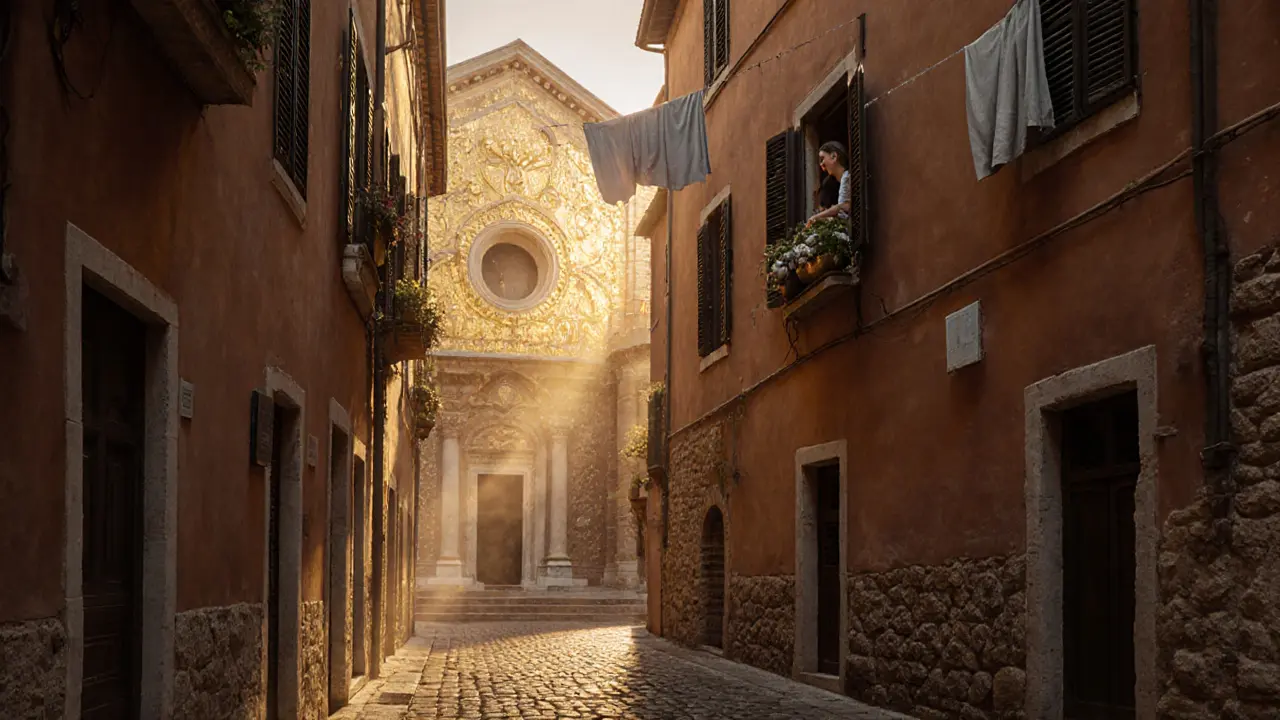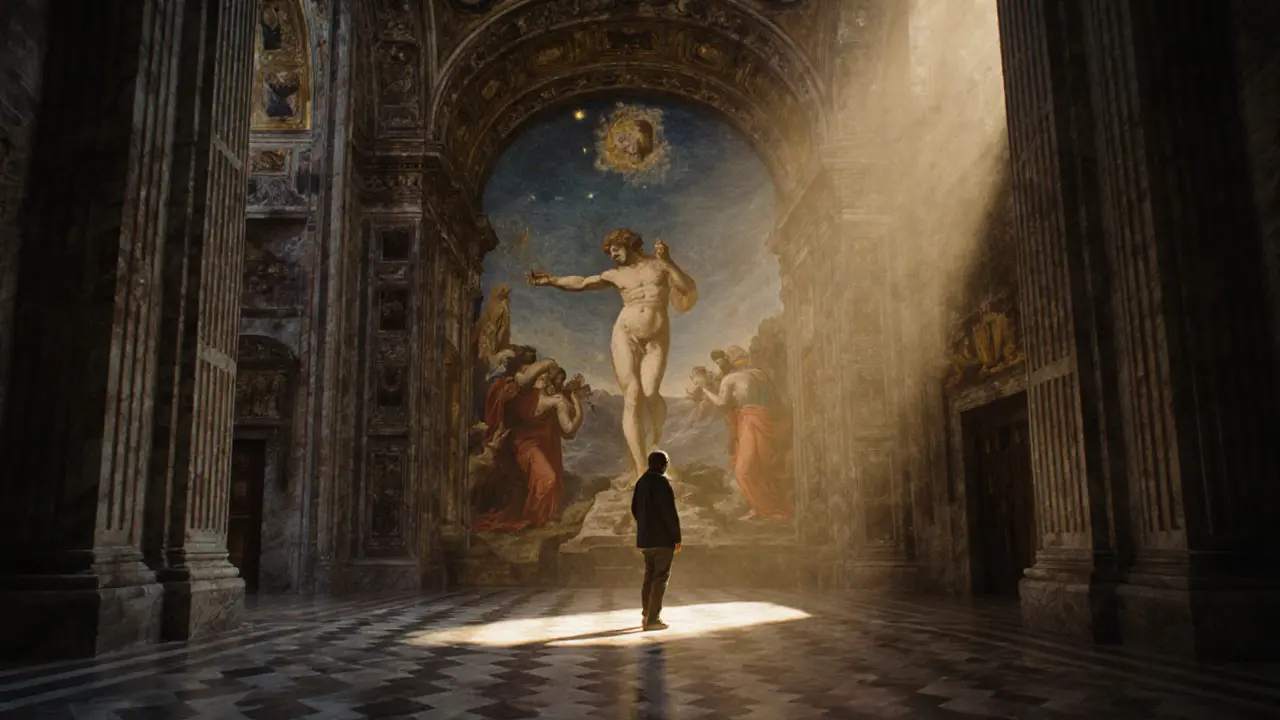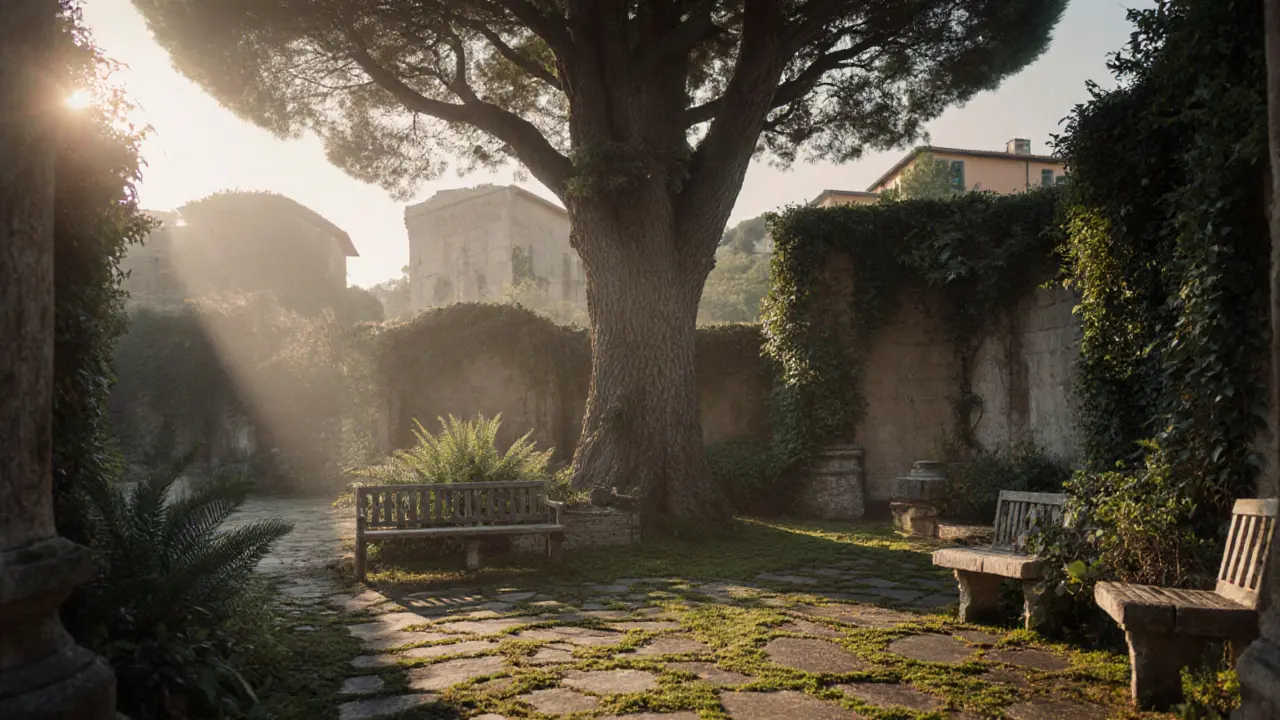
There’s a reason millions of people return to Rome year after year. It’s not just the ancient ruins or the coffee that tastes like it was brewed by monks. It’s the way the city hums-alive, layered, and unapologetically real. Walk through any alley in Trastevere at sunset, and you’ll hear laughter spilling from open windows, smell garlic sizzling in olive oil, and see sunlight catching the gold leaf on a 17th-century chapel. Rome doesn’t show off. It reveals itself slowly, if you’re willing to slow down.
Start at the Colosseum, but don’t stop there
The Colosseum is the poster child of Rome, and for good reason. Over 7 million people visit it every year. But most just snap a photo from the outside and move on. If you want to feel the weight of history, book a guided tour that includes the underground tunnels and the third tier. You’ll stand where gladiators waited before stepping into the arena, and see the same view emperors did-crowds roaring, sand soaked with blood, the sun blinding. The audio guide plays reconstructed sounds: the clang of swords, the roar of the crowd. It’s chilling. And it’s not just a relic. It’s a story still being told.
Afterward, walk the 10 minutes to the Roman Forum. Skip the crowded main path. Instead, turn left after the Arch of Titus and follow the quieter trail up to the Temple of Saturn. Sit on the stone steps. No one’s there. Just the wind, the distant church bells, and the ruins of a civilization that ruled the world. You’ll understand why Romans call this place the heart of their city.
Get lost in Vatican City-without the crowds
The Vatican Museums are overwhelming. The Sistine Chapel alone draws 20,000 people daily. The trick? Go early. Or better yet, go late. The Vatican offers evening openings on Fridays and Saturdays until 10 p.m. The crowds thin out. The lights glow softer. You can stand under Michelangelo’s ceiling without someone’s backpack brushing your shoulder. The Creation of Adam feels different when you’re alone with it. Like you’re the first person to see it.
Don’t skip the Bramante Staircase. Most tourists don’t even know it exists. It’s a double-helix ramp designed by Donato Bramante-same guy who planned St. Peter’s Basilica. It’s the reason you can walk up and down without crossing your own path. It’s genius. And quiet. Just you, the stone, and the echo of your footsteps.
Eat like a local, not a tourist
Rome’s food isn’t about fancy restaurants. It’s about trattorias with checkered tablecloths, nonnas stirring ragù for eight hours, and bakeries that open at 5 a.m. Start your day with a maritozzo-a sweet bun filled with whipped cream, sold at Pasticceria Regoli near Piazza Navona. It’s not on any tourist list. Locals line up for it.
For lunch, head to Da Enzo al 29 in Trastevere. You won’t find a menu online. The chalkboard changes daily. Order the carbonara. Not the version with cream. The real one: eggs, Pecorino Romano, guanciale, and black pepper. No garlic. No onion. Just that. It’s served in a bowl so hot it steams. Eat it fast. The pasta should cling to your fork like silk.
At night, walk to Testaccio Market. The stalls close by 8 p.m., but the food carts stay open. Try the supplì-fried rice balls with molten mozzarella inside. Bite into one and the cheese stretches like taffy. That’s Rome: simple, messy, perfect.

See the Trevi Fountain at night
Everyone throws a coin into the Trevi Fountain at noon. That’s when it’s packed with selfie sticks and tour groups. Go at 10 p.m. instead. The fountain is lit by golden lights. The water glows. The statues look like they’re breathing. No one’s pushing. No one’s shouting. Just the splash of water, the murmur of distant Italian, and the quiet click of a coin hitting the basin.
Legend says if you throw a coin over your left shoulder, you’ll return to Rome. Most people don’t know the real ritual: throw it with your right hand, turn your back to the fountain, and don’t look back. Do it once. You’ll feel it-the pull of the city, the weight of the moment. You’ll want to come back.
Find the hidden gardens of Rome
Most visitors don’t know about the Villa Farnesina gardens. Or the Orto Botanico. Or the quiet courtyard behind Santa Maria in Trastevere where the fountain plays Bach on loop. These are the places Romans go to breathe.
The Orto Botanico, tucked behind the University of Rome, is a 2.5-acre oasis of rare plants, centuries-old trees, and stone benches where students nap under fig leaves. It’s free. No sign. Just follow the narrow alley past the pharmacy. Inside, you’ll find a 400-year-old cedar that survived the bombings of WWII. Sit under it. Listen. The silence here is deeper than any cathedral.

Walk the Appian Way on a Sunday
On Sundays, the first 2 kilometers of the Appian Way are closed to cars. Locals bring their bikes, their dogs, their kids. You’ll see grandmas pushing strollers past ancient tombstones. Teenagers skate over cracked stones that have held chariots for 2,000 years.
Stop at the Catacombs of San Callisto. The entrance is unmarked. Just look for the small stone arch with the faded cross. Descend the narrow stairs. The air turns cool. The walls are lined with niches where early Christians buried their dead. No names. Just symbols: a fish, a dove, a shepherd. They didn’t need words. The faith was in the silence.
Drink wine where the Romans drank wine
Wine in Rome isn’t about labels. It’s about the place. Try Frascati at a tiny enoteca called Il Goccetto near Campo de’ Fiori. The owner pours you a glass from a bottle he opened that morning. It’s crisp, bright, with a hint of almond. He doesn’t speak English. You don’t need to. You nod. He smiles. You pay €4. You leave with your cheeks warm and your head clear.
Or go to Enoteca Provinciale near Piazza Vittorio. The shelves are stacked with bottles from every corner of Lazio. Ask for a Cesanese del Piglio. It’s dark, earthy, with a finish that lingers like a good story. Sit at the bar. Watch the locals. They don’t order by the bottle. They order by the glass. One at a time. Savoring.
Leave your map behind
Rome doesn’t reward planners. It rewards wanderers. The best moments happen when you turn down a street you didn’t know existed. The 15th-century fountain hidden behind a laundromat. The tiny church with a single candle burning in front of a Madonna painted in 1320. The old man playing accordion in Piazza Santa Maria in Trastevere, even though no one’s listening.
Don’t check Google Maps every five minutes. Get lost. Let the scent of fresh basil lead you. Let the sound of a distant bell guide you. Rome doesn’t give you answers. It gives you questions. And the best part? You’ll spend the rest of your life trying to answer them.
What’s the best time of year to visit Rome?
Spring (April to June) and early fall (September to October) are ideal. The weather is mild, the crowds are thinner, and the city feels alive without being overwhelming. Summer is hot and packed. Winter is quiet, with fewer tourists but some attractions have shorter hours. Avoid August-many locals leave, and some shops close.
Do I need to book tickets in advance for the Colosseum and Vatican?
Yes. Both sites sell out daily, especially in peak season. Book through the official websites-Coopculture for the Colosseum and Vatican Museums for the Vatican. Skip third-party sellers. They charge more and sometimes give you the wrong entry time. A timed ticket saves hours of waiting in line.
Is Rome walkable, or do I need public transport?
Rome is best explored on foot. Most major sights are within a 30-minute walk of each other. The metro is useful for reaching the Vatican or Termini, but it’s cramped and doesn’t cover the historic center. Buses can be confusing. Walking lets you discover hidden courtyards, street musicians, and bakeries you’d miss otherwise. Wear good shoes-cobblestones are unforgiving.
What should I avoid doing in Rome?
Don’t order a cappuccino after noon-it’s not a custom, and locals will raise an eyebrow. Don’t eat pizza by the slice at tourist traps near the Colosseum. Don’t wear shorts or bare shoulders in churches. And never try to take a selfie with the statue of Marcus Aurelius in the Capitoline Museums-it’s a popular spot, but touching the statue is frowned upon and can damage the bronze.
How much cash should I carry in Rome?
Card payments are widely accepted, but many small eateries, markets, and street vendors only take cash. Carry around €50-€100 in small bills. ATMs are everywhere, but avoid those with high fees-stick to bank-owned machines like those from Intesa Sanpaolo or UniCredit. Always check your receipt for hidden charges.



